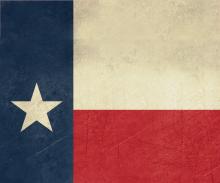supremacy

IF YOU'RE A Christian who cares about social justice, you can’t afford to ignore Texas.
In his book Rough Country, Princeton sociologist Robert Wuthnow puts it bluntly: “Texas is America’s most powerful Bible-Belt state.” Texas has the second largest population in the country, home to more than 26 million people. In 2014, Texans led six out of 21 congressional committees. And more than half of Texans attend church at least twice monthly.
No other state has more evangelical Christians than Texas. Many national Christian media companies, parachurch ministries, and influential megachurches are based in Texas. That’s why Texas is called the Buckle of the Bible Belt: It’s the most populous, wealthy, and politically powerful part of the country where evangelical churchgoing is still a dominant force.
But what if we reimagine the Bible Belt? In 2005, Texas officially became a “majority-minority” state, where traditional minority racial or ethnic groups represent more than half of the population. A majority of Texans under 40 in the pews are people of color. This creates an opportunity: Demographic change could lead to cultural change. What if we cast a new vision for faith in Texas public life that puts working families and people of color at the center?
But demographic change will not translate automatically into cultural change. The dominant historical Bible Belt narrative has influenced and shaped the identities of all Texas Christians, including in the African-American and Latino faith communities.
THIS SHORT VOLUME by Jacqueline Battalora, a professor of criminal justice at St. Xavier University in Chicago, addresses a very important topic in American history and society: The legal, social, and political invention of the category of “white people” as a privileged group, which defines them as the normative Americans over against others, variously defined as “black,” “colored,” “Indians,” and “mulatto.”
When English settlers founded the New England colonies, they referred to themselves as British. As more people from other countries of Western Europe arrived in the area, they tended to group those they saw as similar to themselves as Christians, Germans, etc.—the term “white” was not used—over against “Negroes,” Indians, and rival colonizers such as the Spanish and French.
The term white was first used in colonial law after Bacon’s Rebellion in 1676, during which some African and European indentured servants formed an alliance. Virginia’s colonial leaders responded with a package of laws that created a racial caste of African-descended slaves, distinguished from European servants. These laws decreed that African slaves could not be freed and free Africans could not hold office, serve in the army, or hold European bond laborers. This group was thus disprivileged, in contrast with those of European descent who were defined as “white.”
